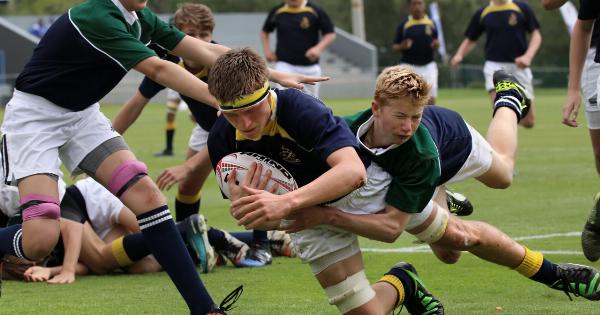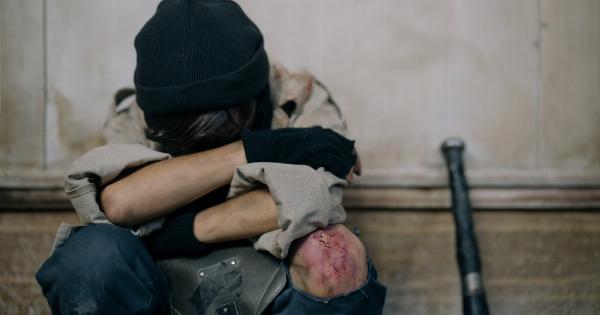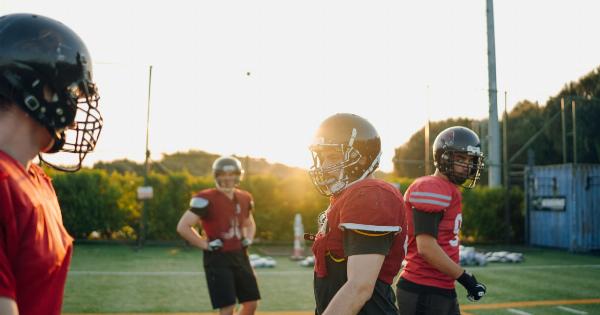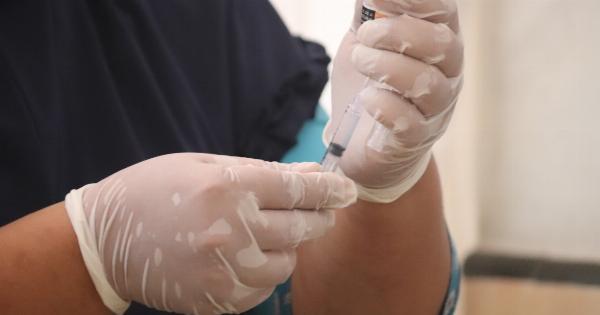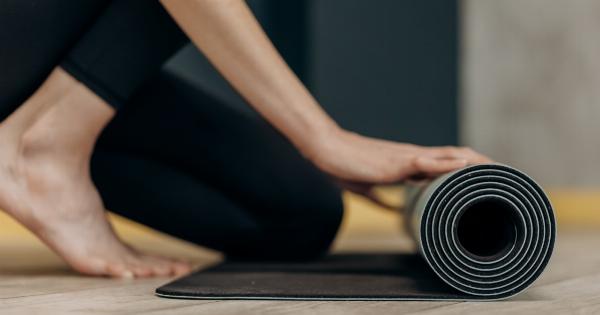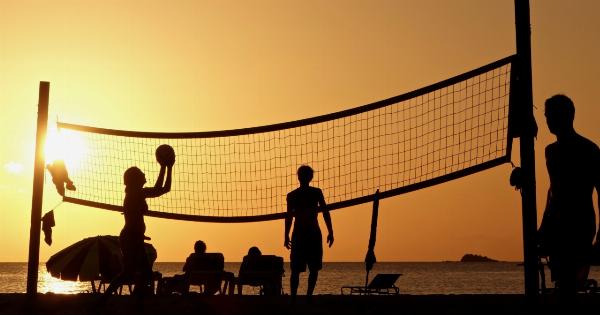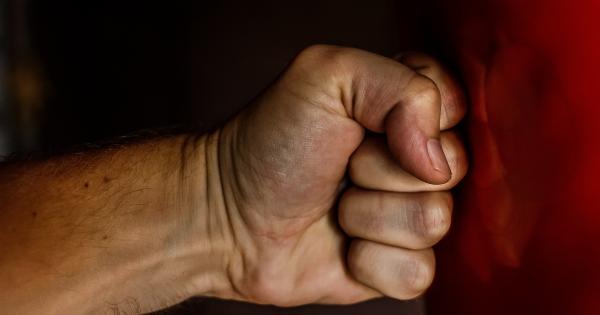Sports injuries are unfortunately common occurrences among athletes of all levels.
Whether you’re a professional athlete, a weekend warrior, or simply someone who enjoys staying active, the risk of sustaining an injury during physical activity is always present. Injuries can range from minor sprains and strains to more severe injuries such as fractures or torn ligaments.
The Importance of Early Detection
Recognizing an injury early on is crucial to prevent it from worsening and to ensure timely and effective treatment. Ignoring or downplaying sports injuries can lead to long-term consequences and potentially even permanent damage.
Here are some reasons why early detection is essential:.
1. Minimize Downtime and Speed up Recovery
By spotting a sports injury before it worsens, athletes can take the necessary steps to address the issue promptly. This often leads to faster recovery times, enabling athletes to return to their favorite activities sooner.
Ignoring a minor injury, on the other hand, can result in a longer recovery timeframe, thereby prolonging the time spent away from sports or physical activities.
2. Prevent Chronic Conditions
Some sports injuries, if left untreated or neglected, can develop into chronic conditions. For example, an untreated ankle sprain can lead to ongoing instability, increasing the risk of subsequent injuries.
By catching an injury early, athletes can implement preventive measures and seek proper treatment, reducing the likelihood of chronic conditions and long-term complications.
3. Avoid Compensation Injuries
When one part of the body is injured, it can impact the way we move and function. The body tries to compensate for the injured region by putting additional stress on other areas, potentially leading to new injuries.
Early recognition of an injury allows athletes to address it promptly, avoiding compensation injuries that can further hinder performance and prolong recovery.
4. Prevent Further Damage
In some cases, sports injuries can worsen when left untreated or undetected. What might initially appear as a minor issue can develop into a more significant problem without appropriate intervention.
Recognizing and addressing an injury early helps prevent further damage to tissues, joints, or muscles, reducing the risk of long-term complications.
Common Signs of Sports Injuries
While each sport presents its unique risks and injury patterns, some common signs indicate the presence of a sports injury.
As an athlete or someone engaged in physical activities, it is essential to be aware of these signs to identify potential injuries early. Here are a few common signs to watch out for:.
1. Pain and Discomfort
Pain is often the first sign of a sports injury. Whether it’s a sharp pain, a dull ache, or a constant discomfort, any unexplained pain during or after physical activity should not be ignored.
It’s crucial to differentiate between normal muscle soreness and pain that continues or worsens over time.
2. Swelling and Redness
Swelling and redness around a joint or muscle can indicate an injury, such as a sprain or strain. Inflammation is the body’s natural response to injury, and noticeable swelling or discoloration should not be taken lightly.
3. Limited Range of Motion
If you notice a decreased range of motion in a joint or muscle, it could be a sign of a sports injury. Inability to move a body part as freely as before or experiencing stiffness may indicate an underlying problem.
4. Instability or Weakness
Feeling unstable or weak in a particular area can suggest a potential injury. This instability can make it difficult to perform specific movements or maintain balance during physical activities.
5. Audible Popping or Snapping
Audible sounds, such as a popping or snapping sensation, during an athletic movement could indicate a muscle or ligament tear. It’s important not to ignore these sounds and seek proper medical evaluation.
6. Difficulty Bearing Weight
If you experience difficulty or pain while bearing weight on a particular limb, it could be indicative of an injury. This sign is especially relevant to injuries involving the lower extremities, such as ankle or knee injuries.
7. Numbness or Tingling
Numbness or tingling sensations in the extremities may be a sign of nerve involvement or compression resulting from an injury. Ignoring these sensations can lead to further nerve damage if the underlying cause is left untreated.
8. Visible Deformities or Misalignment
In cases of more severe injuries, visible deformities or misalignments of bones or joints may be apparent. These visual changes should be treated as urgent and require immediate medical attention.
What to Do if You Suspect an Injury
When you suspect an injury, it’s important to take appropriate action promptly. Here are the steps to follow if you believe you’ve sustained a sports injury:.
1. Stop the Activity
If you experience pain or suspect an injury, stop the activity immediately. Continuing to push through the pain can exacerbate the injury and worsen the damage.
2. Rest and Evaluate
Giving your body time to rest is crucial. Avoid putting weight or strain on the injured area and evaluate the severity of the pain and any accompanying symptoms.
3. Apply Ice
Applying ice to the injured area can help reduce swelling and inflammation. Use a cold pack wrapped in a cloth or a bag of frozen vegetables and apply it for 15 to 20 minutes at a time, every few hours.
4. Compress the Injury
Use a compression bandage to provide support and reduce swelling. Make sure not to wrap it too tightly, as this can compromise blood flow.
5. Elevate the Injured Area
Raise the injured limb or area above heart level if possible. This helps reduce swelling and promotes better blood circulation.
6. Seek Medical Evaluation
If the pain persists, worsens or if you experience any of the signs mentioned earlier, it’s important to seek medical evaluation.
A healthcare professional can assess the injury, provide a proper diagnosis, and recommend appropriate treatment options.
Treatment and Rehabilitation
The treatment and rehabilitation process for sports injuries can vary depending on the type and severity of the injury. Here are some common treatment approaches:.
1. Rest and Immobilization
Many sports injuries require a period of rest and immobilization to allow the body to heal. This may involve using crutches, slings, or braces to stabilize the injured area and prevent further damage during the early stages of healing.
2. Physical Therapy
Physical therapy plays a crucial role in recovering from sports injuries. It helps restore strength, flexibility, and range of motion while minimizing the risk of future injuries.
A physical therapist can design a personalized rehabilitation program to address the specific needs of the athlete.
3. Medications and Pain Management
In some cases, over-the-counter or prescription medications may be recommended to manage pain, inflammation, or muscle spasms associated with sports injuries. It is important to follow medical advice and take medications as prescribed.
4. Surgical Intervention
In severe cases or certain types of injuries, surgical intervention may be necessary to repair damaged tissues or stabilize joints. Surgery is usually considered as a last resort when conservative treatments have been unsuccessful.
Prevention Strategies for Sports Injuries
While it may not be possible to prevent all sports injuries, there are several measures athletes can take to reduce their risk. Here are some key strategies for injury prevention:.
1. Warm Up and Stretch
Proper warm-up exercises and stretching routines help prepare the body for physical activity and reduce the risk of muscle strains or tears. Include dynamic movements and stretches that target the muscles being used during the activity.
2. Use Protective Equipment
Wearing appropriate protective equipment, such as helmets, pads, or braces, can significantly reduce the risk of injuries. Make sure all equipment fits properly and is in good condition.
3. Follow Proper Technique and Form
Using correct technique and form during sports or exercises helps minimize the risk of injuries. Seek guidance from a coach or trainer to ensure you are performing movements correctly and efficiently.
4. Gradually Increase Intensity and Duration
Avoid pushing your body too hard too quickly. Gradually increase the intensity, duration, or frequency of your workouts to allow your body to adapt and prevent overuse injuries.
5. Listen to Your Body
Pay attention to how your body feels during and after physical activity. If you experience pain or discomfort, take a break and allow yourself time to recover. Pushing through pain can lead to more significant injuries.
6. Cross-Train and Vary your Activities
Engaging in a variety of activities helps prevent overuse injuries by reducing repetitive stress on specific muscles or joints. Cross-training also improves overall fitness and reduces the risk of muscle imbalances.
7. Stay Hydrated and Properly Fuelled
Dehydration and inadequate nutrition can affect athletic performance and increase the risk of injuries. Drink plenty of water and consume a balanced diet to support your body’s needs.
8. Get Sufficient Rest and Recovery
Rest and recovery days are just as important as training days. Allow your body time to repair and rebuild itself to prevent overuse injuries and optimize performance.
9. Stay Informed and Educated
Keep up with the latest research, best practices, and safety guidelines in your sport or physical activity. Stay informed about potential risks and take proactive measures to minimize them.
Conclusion
Spotting sports injuries before they worsen is crucial for athletes of all levels. Early recognition allows for prompt treatment, minimizing downtime, preventing chronic conditions, avoiding compensation injuries, and preventing further damage.
By familiarizing yourself with common signs of sports injuries and taking appropriate action, you can prioritize your health, wellness, and longevity in your chosen physical activities.






